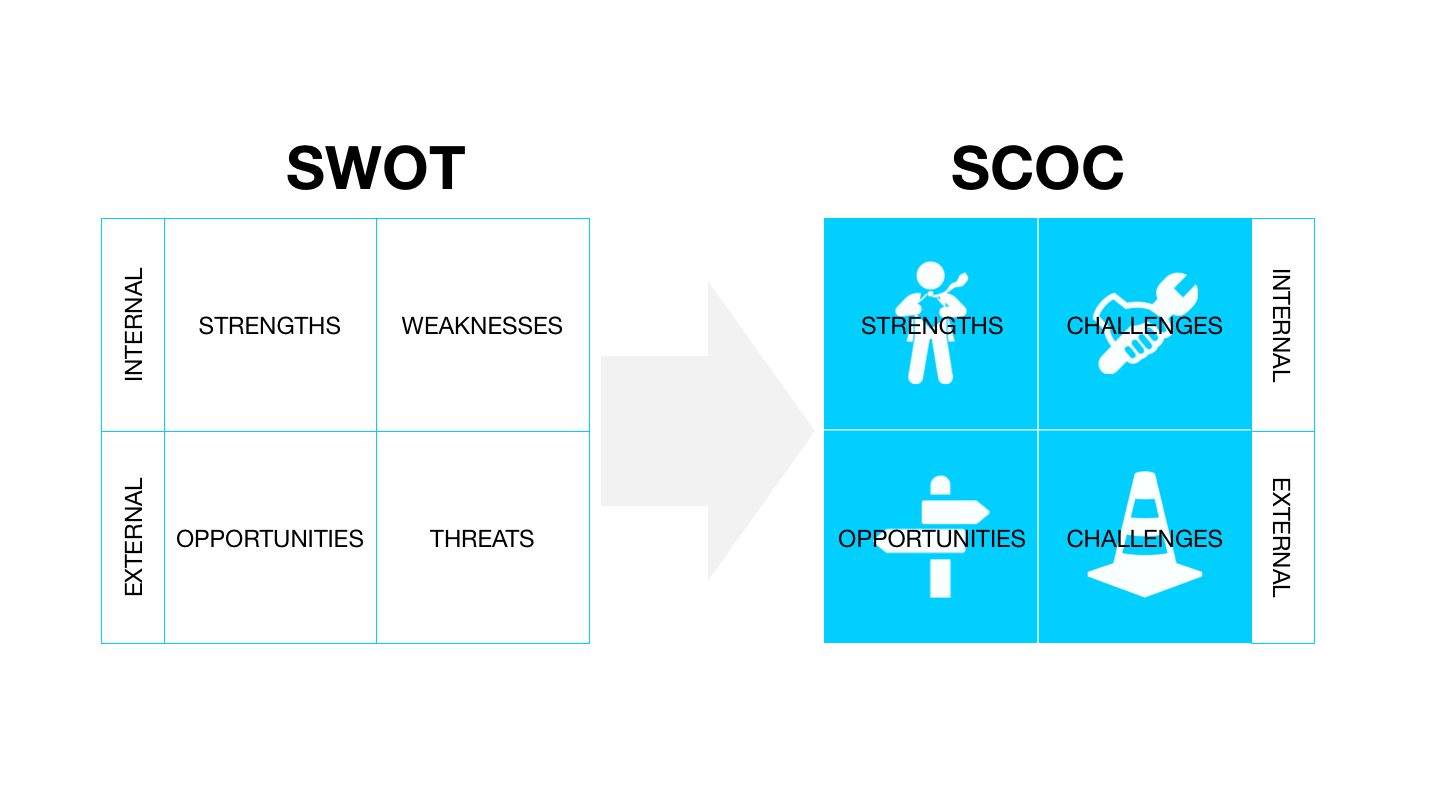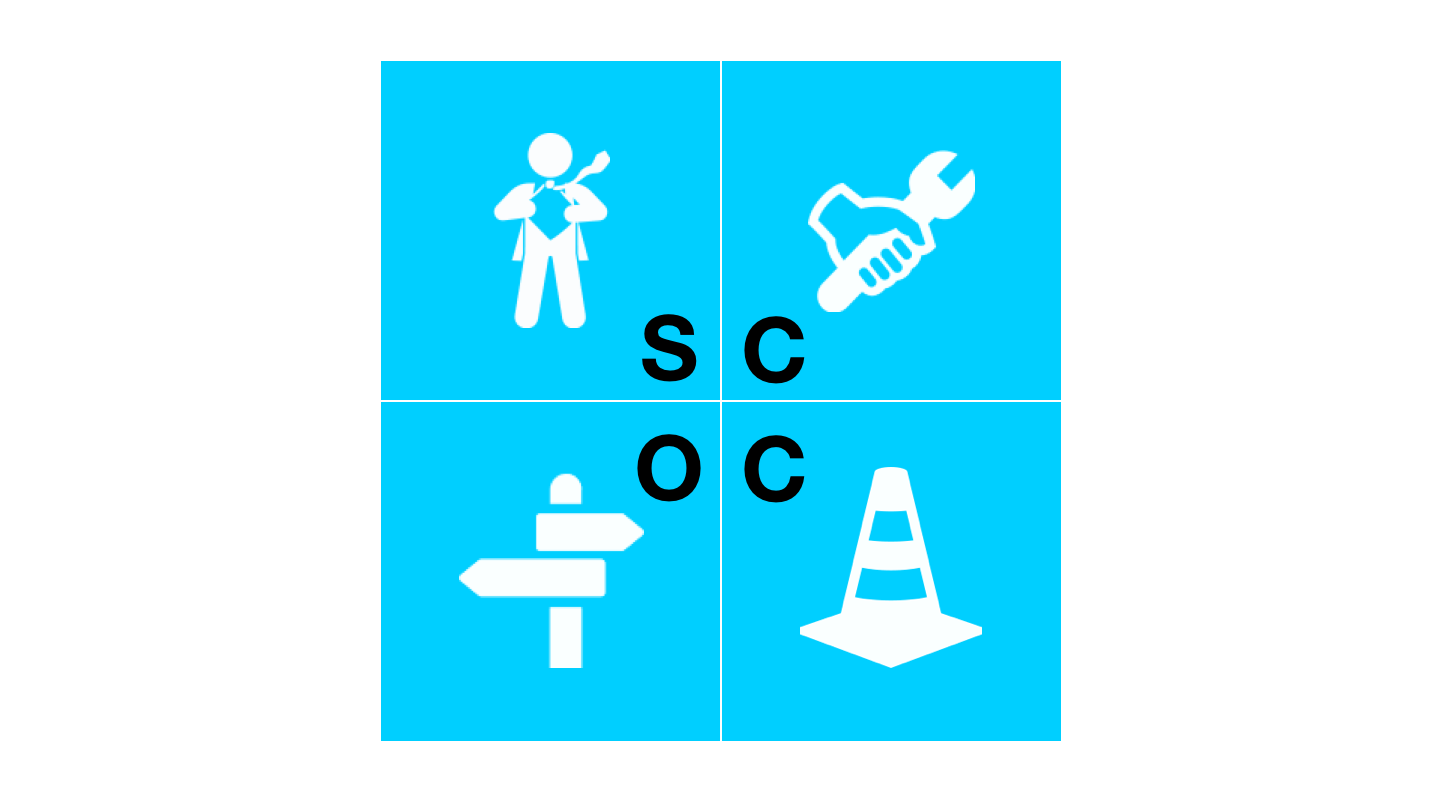The positive evolution of a classic strategic planning tool. Introducing asset-based SCOC, which will drive your open, solution oriented mind-set for outstanding results.
By Armin Forstner, Partner, Serrano 99 Management Consulting
During my time leading a publishing business, time and time again we used the SWOT analysis in our strategy meetings. A classic tool which I was first introduced to when I entered business college in Vienna 25 years ago. It’s simple logic of analysing internal Strengths and Weaknesses, matched with external Opportunities and Threats does, in theory, highlight a clear path for your strategy. Well, have you ever chaired a meeting where a SWOT analysis is being discussed? When I reflect on those meetings, we spent most of the meeting trying to repair our weaknesses and speculating about the external threats instead of building on our strengths and wisely exploring our opportunities. Now, after embracing positive and mindful leadership, I understand that analysing weaknesses is a deficit-based approach that on top encourages a focus on external threats. These external threats we can only prepare for and manage as they materialise, but we can rarely influence them, so why waste our time on them?
Why does negativity become so prominent when using SWOT? There is a simple scientific explanation to that: Negative emotions have about three times the impact than positive ones. That made sense when long ago an external threat was a wild animal we had to either fight or flight (run from), in a modern business context negativity means a narrowed focus with less ability to see opportunities. Consequently, it can lead to exaggerated assessments of weaknesses and threats, with an undervaluation of the strengths and opportunities. This can limit you in your strategy decision-making process.
There are alternative and positive ways of doing this – SOAR, SOPA and SCOC
Two, similar positive strategic planning tools have been introduced in the last couple of years: SOAR – Strengths, Opportunities, Aspirations and Results (Stavors J. M. and Heinrichs G. [2009] The thin book of SOAR) and, SOPA – Strengths, Opportunities and Positive Action (Young J. H. [2017] Mindfulness Based Strategic Awareness Training). These two suggest a strength-based, engagement at all levels, action, innovative and goal oriented strategic approach, adding to the original SWOT analysis.
Both frameworks took Peter F. Drucker’s famous quote literally: “The task of leadership is to create an alignment of strengths, making our weaknesses irrelevant.” and did not translate Weaknesses and Threats from the original model into their frameworks, which I always felt was missing in these approaches. I believe as leaders we cannot disregard those completely but we will need to find a different way to look at them. Further, both developed the simple SWOT diagnostic tool into detailed positive strategic planning frameworks. This extra content might be necessary when you look at these as stand-alone tools for leaders not familiar with the complexity of positive and mindful leadership principles.
For us positive and mindful leaders and all of those on the path to becoming one, I would like to offer a new alternative:
SCOC
Understanding SWOT as I do and viewing it through the lens of positive psychology I took the best of both and reframed the proposition: We translate Weaknesses and Threats into Challenges (internal & external). Internal Challenges, like implementing new process and structures, we will need to overcome in the future and external Challenges are risks we need to consider. With this simple reframing exercise, we achieve the same diagnostics SWOT gives us, but this time with a perspective that will encourage a more solution driven mind-set.

With SCOC we analyse with an asset-based approach: what works well (Strengths) and on what can we build on to solve our current and future internal Challenges. We take this solid groundwork and now look at Opportunities, matched with our strengths, and examine any external Challenges that might come along with an open, positive mind-set. This positive reframing will allow your mind to stay open, curious and creative. You are using the power of your brain to contemplate strategies and not your arms and legs to fight these wild animals. You will see the difference in discussion when you chair your next strategy meeting.
SCOC is of course not a comprehensive positive strategic planning framework, like it’s SWOT Grandfather, it can help with your analysis and preparation for strategic decisions. The wider framework you are using for your strategic planning process should be embedded in your positive and mindful leadership, with purpose, appreciation and diversity at its centre.
Do let me know how you are getting on and what experiences you have when using SCOC or if you need help with a wider, comprehensive strategic planning framework: armin@serrano99.com
So, SWOT no more and move to positive strategic planning tools!

